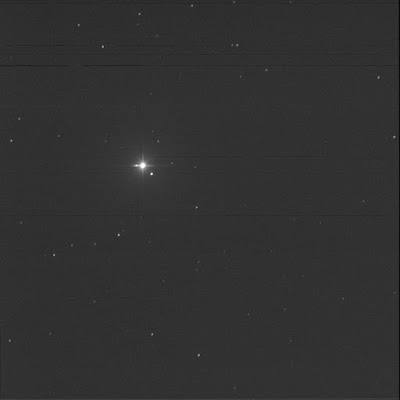So, had another go, but a much longer exposure, compared to previous. 16 and 27 Aug' 19 were at a tenth of a second. Also tried a ½ second. Doubled.
Luminance only, 1 second subexposures, 12 stacked shots. FITS Liberator, GIMP. North is up; east is left.
I like all the field stars.
OK.
B is easy. Down and right. That's south-west.
C is visible. Obvious when zoomed in. Nearly due west. Just above the diffraction spike. Oh... it has some very faint neighbours.
Mystery star that I spotted visually way back in August 2019 is here. In fact, it's brighter than C! A variable star? This is definitely not shown in SkyTools.
GSC 01513-0543, as seen before, is inline with but well beyond B.
I believe there's an artefact in this image, a stacking issue, that's creating the bright bump on the east diffraction spike.
There are mag 15 and 16 stars in this image.
And D? If the WDS is right, D should be south of A, close, at mag 8.
DRS 58 AD at 176°, 8.3", mag 8.1, a blue-white A-class star.
It'd be in the glare of A...
There are double diffraction spikes...
§
Still don't know what the mystery star is but it's not my imagination. Saw it in an RC 16", sketched it in September 2019 with a C8" at high power, and I've tagged it easily in this image.
Still can't spot the D star. The typical double star challenge of a bright primary, a secondary at delta mag 3 or 4, in close.



No comments:
Post a Comment